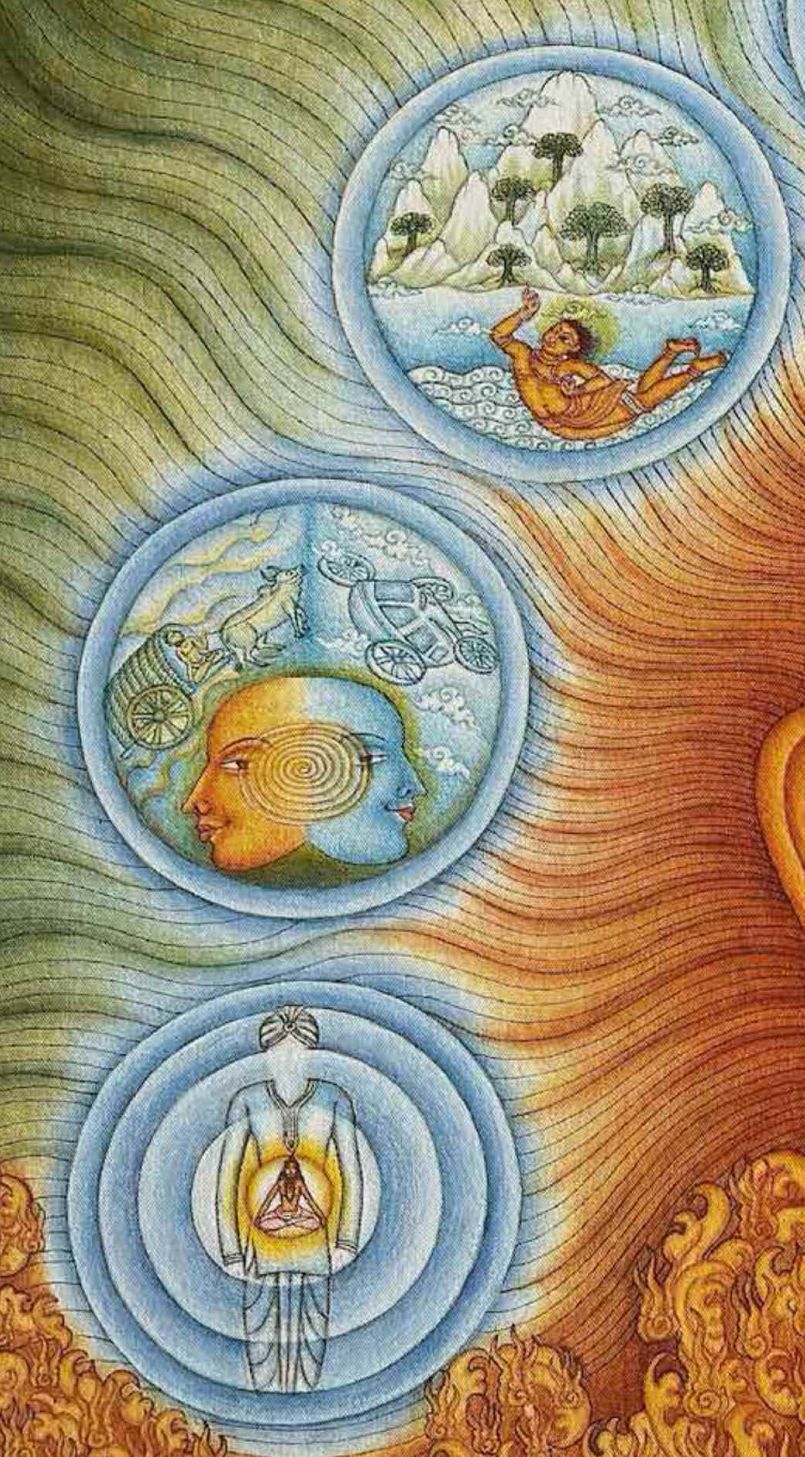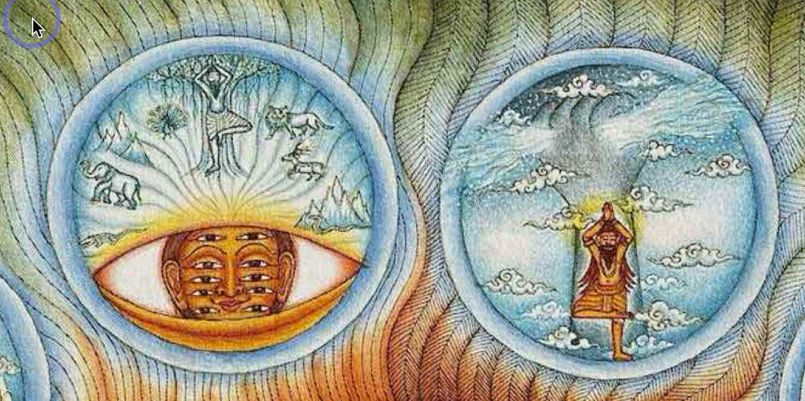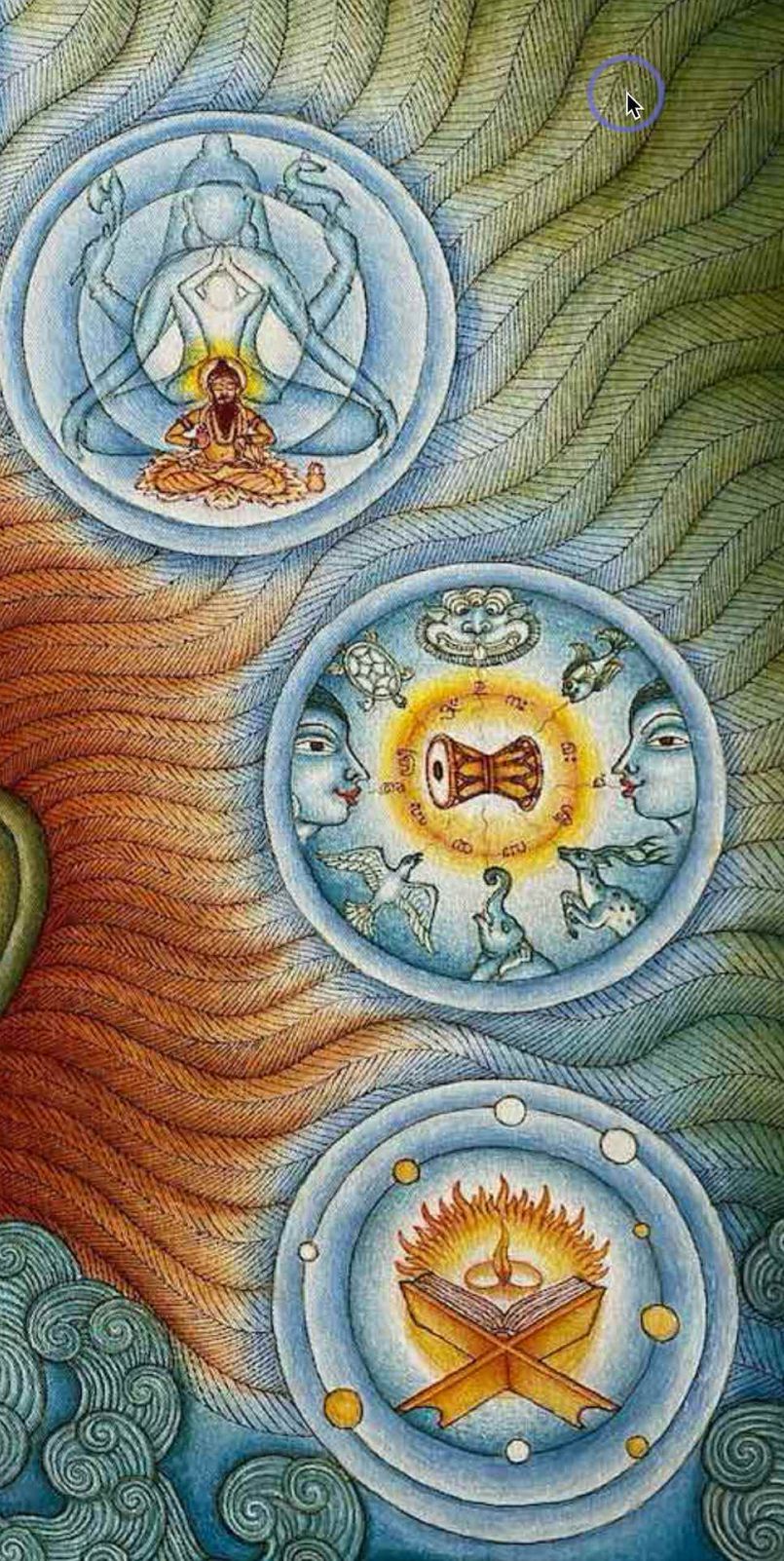Historical Yoga Sutras
June 20, 2024As many know, Satguru Bodhinatha Veylanswami (who is in Malaysia today) has been working in the early hours before dawn for many months on a new edition of the Yoga Sutras of Patanjali. It is historic because it is an interpretation of the classical 195 sutras from a Saiva Siddhanta point of view. Most editions follow the Advaita Vedanta take, so this one is unique in that it gives monistic theism exposition. We share here below a verse from the third canto, so you can enjoy the progress and the style. You will note we are including Gurudeva's writings on the topic at hand. In the slideshow we share one of the ten works of art done in Kerala for the book, which will be highly illustrated, as is our style.
vyutthna-nirodha-saskrayor-abhibhava-prdur-bhvau nirodha-kaa-cittnvayo nirodha-parima .. 3.9..
nirodha-parima = the development of/transformation toward (parima) restraint (nirodha) | abhibhava-prdurbhvau = is both the manifesting (prdurbhvau) and subjugating (abhibhava) | vyutthna-nirodha-saskrayo = of the subtle impressions (saskrayo) of restraint (nirodha) and going out (vyutthna) | nirodha-kaa-citta-anvaya = connected with/following (anvaya) the mind (citta) at the moment (kaa) of restraint (nirodha) |
Sutra: Restraint develops when the externalizing samskaras are subdued by the restraint samskaras, which appear in the mind at the moment of restraint.
Bhashya: The yogi through his inner work and discipline develops new samskaras which neutralize and subdue the worldly samskaras which are the common man's lot. These yogic impressions are brought to bear and further strengthened each time he strives to control the mind, to quiet the mental noise. Slowly his controlling impressions become stronger than the instinctive impressions that normally dominate and he is able to use the one to be rid of the other. This subtle interaction between the control and the controlled is a major discussion in the sutras, to be understood through practice and more practice.
Sivaya Subramuniyaswami
As you sit to meditate, awareness may wander into past memories or future happenings. It may be distracted by the senses, by a sound or by a feeling of discomfort in the body. This is natural in the early stages. Gently bring awareness back to your point of concentration. Don't criticize awareness for wandering, for that is yet another distraction. Distractions will disappear if you become intensely interested and involved in your meditation.

This art is a depiction of eight of the 25 siddhis, mystical powers, which are awakened by the advanced yogi, and which he is advised to abjure. The art is by Suresh Mutthukulam and intimates the balance of inbreath and outbreath, ida and pingala, air and fire, sun and moon, and more pairs of opposites.

From bottom to top: The first siddi is invisibility. Notice the clothing can be seen, but the yogi\
s face, hands and feet are invisible. Knowledge of past and future, with an old bullock cart for the past and a flying car for the future, with the yogi looking both ways. Physical strength is cleverly shown by the flying yogi who is holding up an entire mountain range with his little finger! '

4) seeing and hearing at a great distance, called \"remote viewing;\" 5) ability to control nature (rain, animals and people). Left to right: Here we have the power to see and hear at great distances (remote viewing is one term for this). The ability to control the forces of nature is shown by the yogi\
s hand holding a lightening bolt. This siddhi is not well known.'

Top to bottom: 6) entering another person\
s body; 7) understanding all languages, even animal sounds; 8) attaining cosmic knowledge. It\'s the ability to psychically enter the body of another person and be conscious in it. Suresh has creatively drawn the power to understand all languages, human and animal. Attaining to cosmic knowledge is shown by a galactic circle around a holy text containing the light of all knowing and realizations. '
}
];